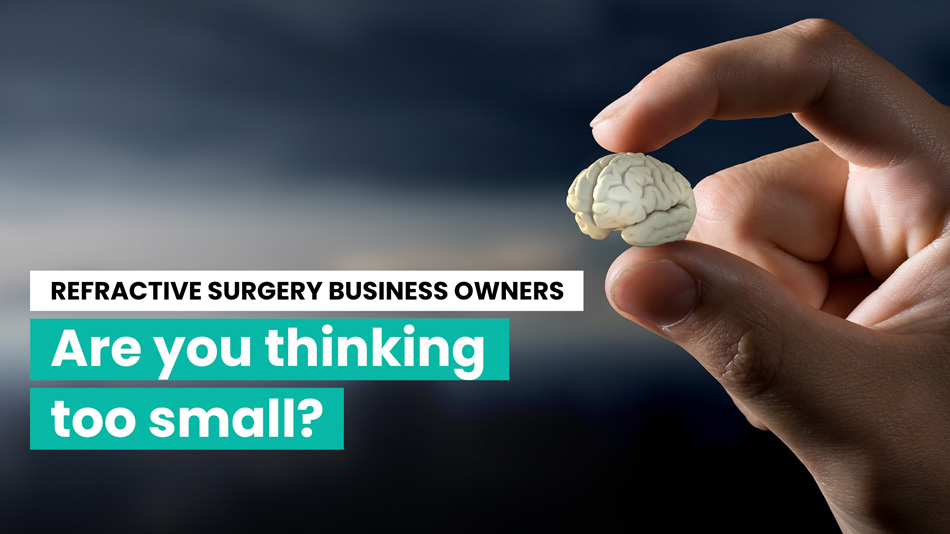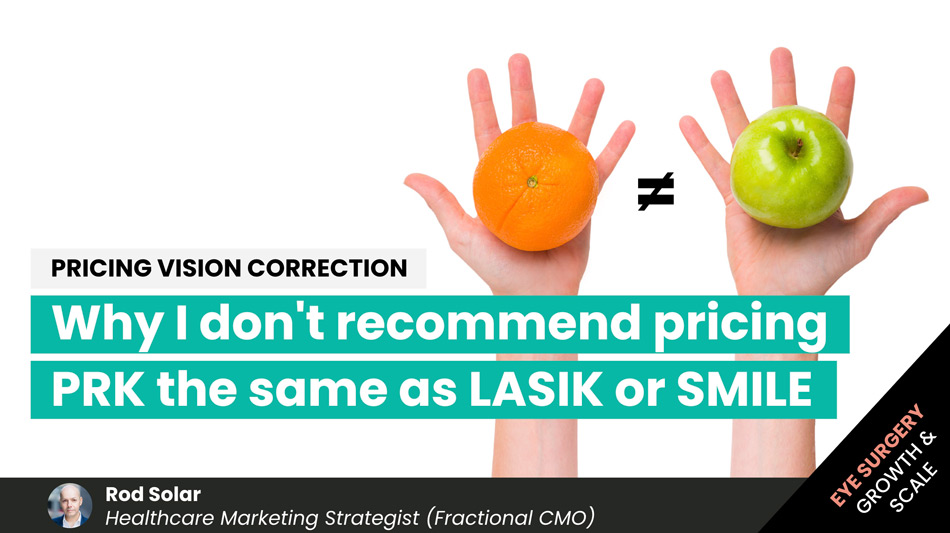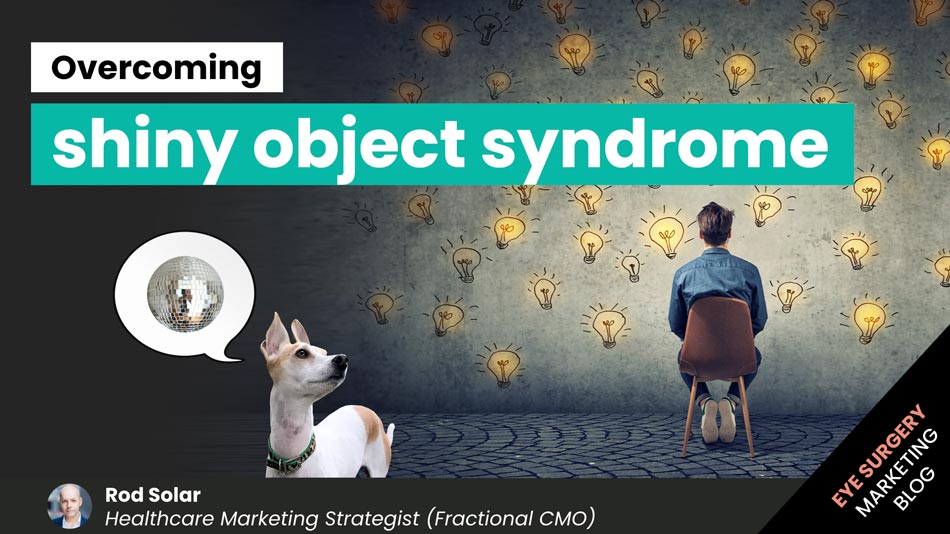
Overcoming shiny object syndrome
Dave Packard, the co-founder of computer giant Hewlett Packard once said: “More businesses die from indigestion than starvation.”
Packard believed business leaders try to do too much at once, losing focus and traction. He was describing what we call “shiny object syndrome”.
Shiny object syndrome is the common tendency to continuously chase new ideas and opportunities without evaluating their benefit to your strategic goal.
Like stopping for pennies on a path, you slow your progress towards your pot of gold. Like a graveyard of half-built bridges, you leave a legacy of good ideas that rarely materialize.
Without a doubt, shiny object syndrome is one of the biggest challenges practice owners face. Unfortunately, this problem can quickly lead to distraction, staff overwhelms, undue stress, lack of focus, and wasted resources.
The Growth Triad is the solution for imaginative visionaries who want to focus on the ideas and opportunities that have the best chance of helping them achieve their strategic goals.
It provides a framework for evaluating opportunities to determine which ones are worth pursuing. This article will explain the fundamental steps we use to create predictable growth for vision correction practices worldwide.
Ingredients for predictable growth
Every vision correction practice (no matter what stage of development), needs:
- A documented marketing strategy
- Actionable metrics
- Tools and tactics
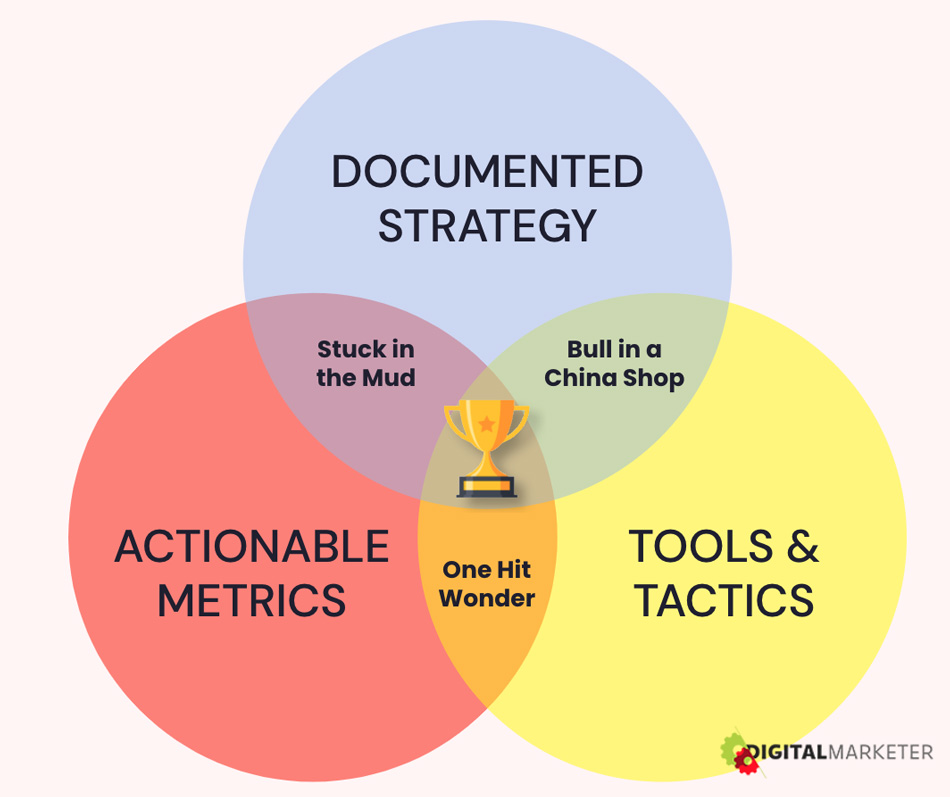
Figure 1 – The Growth Triad
These three elements make up the Growth Triad, the formula we use to create predictable growth.
A documented strategy answers how your practice creates patients from scratch. Actionable metrics help you to know what the practice needs to do – and when. Tools and tactics are all the things that most people believe marketing to be (ads, SEO, social media, etc.)
Some practices with strategies and metrics fail to execute tactics. These practices are stuck in the mud. They know where they’re going but don’t have the tools or abilities to get there.
Some practices have a plan. They have lots of activities but have little idea what’s working and what isn’t. Seeing your name in lights is fun, but these practices are bulls in china shops. A bull in a china shop proceeds randomly with whatever looks interesting in the moment. They might have a plan, and throw tools and tactics at it, but don’t measure anything (or they don’t measure the right things), so they have little idea of what works and what doesn’t. They are the ultimate amateurs, because they don’t keep score. Professionals keep score.
Most practices execute tactics and measure their results. Without a strategy, their tactics work until they don’t. Relying on what they cannot control, these practices are one-hit wonders. They have no unified framework for predictable growth.
What a marketing strategy looks like
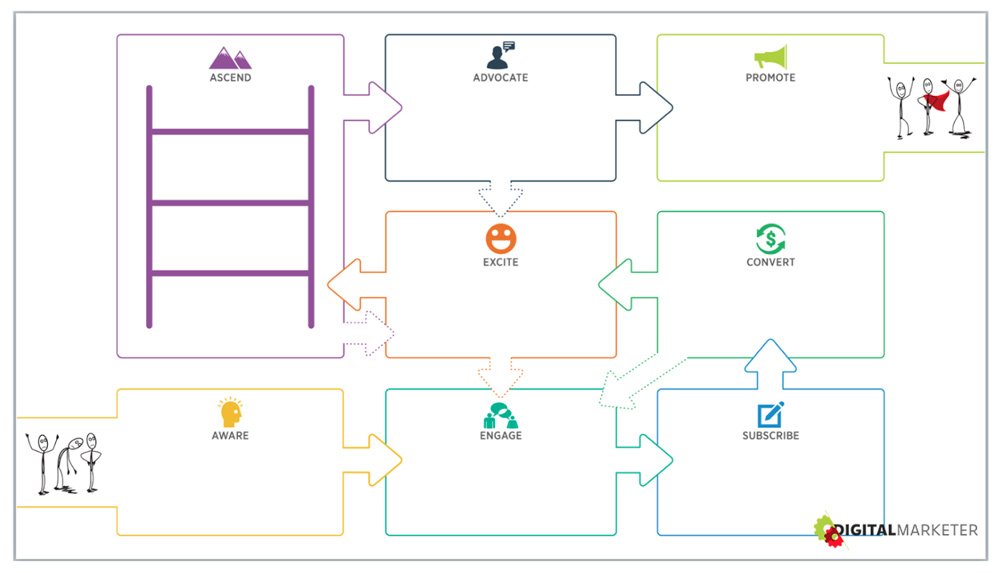
Figure 2 – The Customer Value Journey
A documented strategy summarises how you will turn
- strangers into prospects
- prospects into patients, and
- patients into raving (and referring) fans.
Knowing how you will influence these three “conversions” is the key to predictable growth. We call this documented marketing strategy a “Customer Value Journey” (CVJ).
The CVJ delivers what every practice needs – a predictable flow of patients from scratch. It should align your objectives across your departments. Thus, clinical people and marketing people can agree to work towards the same result – a successful patient. Because the goal is “success for the patient” – not a sale – it should align your patients’ interests with your own. A CVJ establishes a shared vocabulary. Then everyone in the organisation can agree on the definition of a “lead”.
Your CVJ should detail how you will
- Generate awareness
- Engage prospects
- Get leads
- Convert leads
- Create excitement
- Close first appointments
- Wow your patients, and
- Generate referrals
A CVJ is not a tome that sits on a shelf gathering dust. Your CVJ should be a living document that exists on one page. Furthermore, you should create a CVJ for every patient segment. For example, you should have a CVJ for young myopes, another for middle-aged presbyopes, and one for ageing cataract patients.
Measure what matters most and ignore the irrelevant
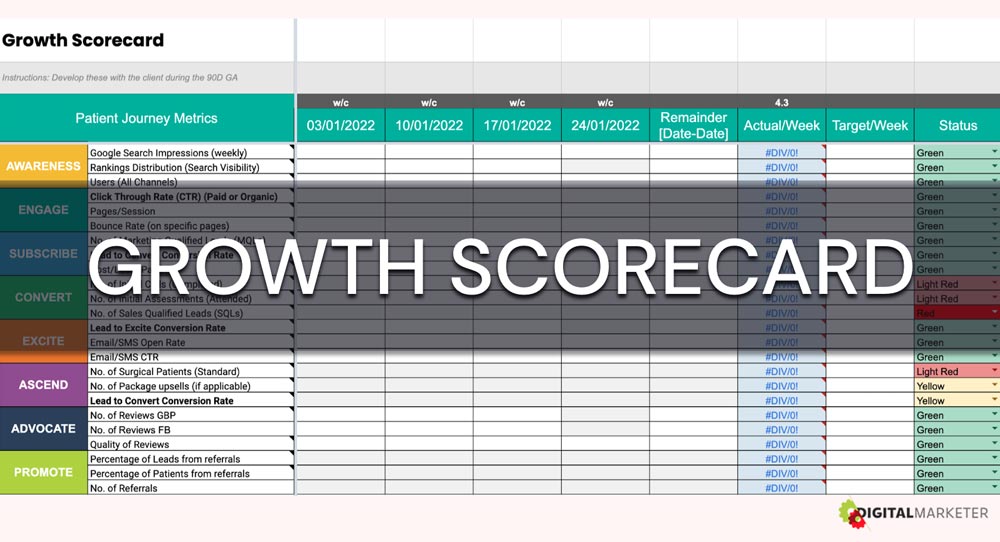
Figure 3 – The Growth Scorecard
We recommend creating a Growth Scorecard. Choose only one to three metrics per stage of the CVJ (1-8 above). Three metrics help you focus on what matters most and ignore irrelevant statistics.
We recommend you set a monthly target for each metric. Then, check your performance against your target every week. Give your practice a grade on each metric every month. For example, a traffic system works well – green is good, yellow is ok, and red is poor. Log your scores into a spreadsheet and review it every 90 days.
Laser focus on the needle-movers

Figure 4 – Tools and Tactics
Tools and tactics are the most enjoyable aspects of marketing. Marketers want to place ads, create content, and run campaigns. These are the plays you see on the field.
But what should you do first? Allow the CVJ and the Growth Scorecard to suggest what tools and tactics you need to apply.
Now it’s time to optimise one stage at a time. With a Growth Scorecard, you can choose the stage suffering the most.
You aim to turn your red scores into yellow and your yellow scores into green. If you have more than one stage lacking, optimise the stages in reverse (6-4 first, second, 3-1, and then 8-7).
When you’ve chosen your priority stage, identify no more than three significant initiatives that will likely move the needle on growth. Next, determine three projects you can complete and get a result within 90 days. It can be a part of a project or a whole project. The key is that you can deploy it and get a result – within 90 days.
Identify the metric that your project will affect. What’s the actual number? What’s the target? You’ll know the gap because it is on your Scorecard. Then choose who will own it. Finally, start the three projects to close the gap.
Spinning your growth flywheel for predictable growth
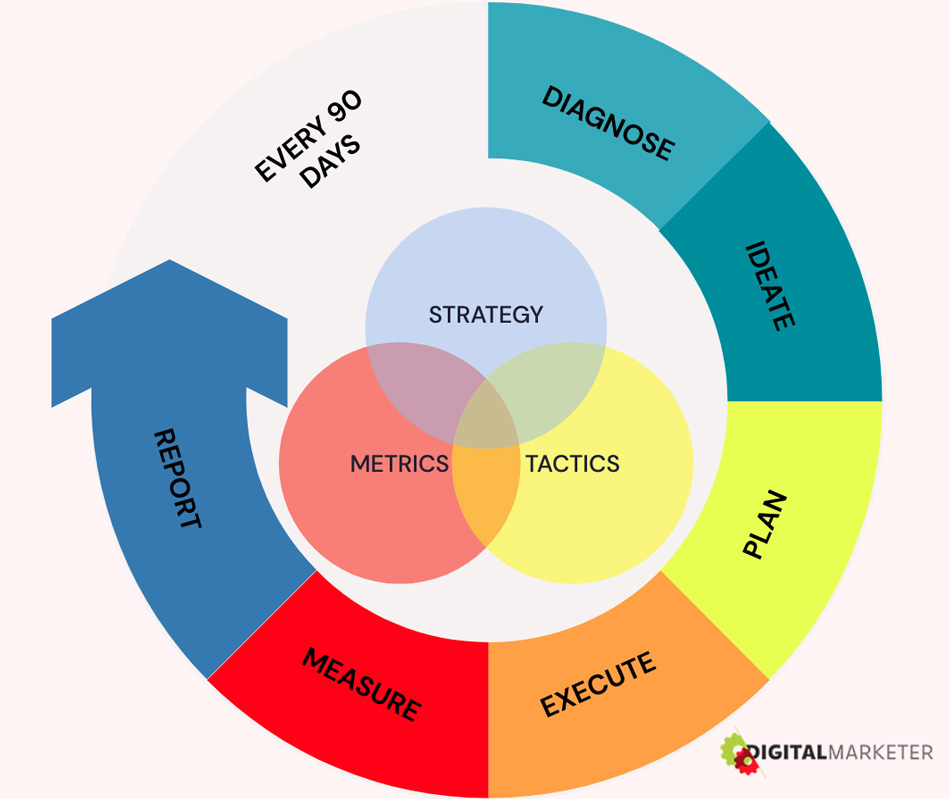
Figure 5 – The Growth Flywheel
Every 90 days, repeat the process I’ve shared with you.
- Diagnose your weak points.
- Ideate solutions.
- Plan your projects.
- Execute your initiatives.
- Measure your results.
- Report your progress.
We call this iterative process the Growth Flywheel.
As you improve the scores on your Growth Scorecard, increase your targets. What was once green becomes yellow. What was once yellow is now red.
Every practice needs a documented marketing strategy, actionable metrics, and tools and tactics. Every practice needs to focus on what matters most, and improve their weak point, every 90 days.
If you’ve doubled your awareness, you can double the size of your practice. Imagine increasing two stages by 50% Or growing every stage by 10%.
Predictable growth doesn’t happen by picking up every shiny object along the road. Instead, fuel predictable growth by using a comprehensive framework for predictable growth. Optimising each stage of the value journey growth isn’t just predictable; it’s inevitable.
NOTE: The best way to answer that nagging question about practice growth or marketing or patient volume in the back of your mind is to book a free 15-minute compatibility call. Get some options and go away with a clear idea of what’s possible.
About the author

Rod Solar
Founder & Scalable Business Advisor / fCMO
Rod Solar is a co-founder of LiveseySolar and a Scalable Business Advisor for its customers. Rod mentors and coaches eye surgery business CEOs/Founders and their leadership teams to triple their sales, double their profit, and achieve their “ideal exit”.
Related Posts
Meet our Co-Founders
We’re passionate about helping leaders of high-quality, growth-minded practice owners double their practice revenue

Rod Solar
Founder & Scalable Business Advisor
For over 20 years, I’ve helped ophthalmology entrepreneurs scale their private practices. I specialise in doubling revenue within three years by offering a proven framework, hands-on experience, and a team of experts who implement what works. We take the guesswork out of growth and scale, so you can focus on delivering exceptional patient care while maximising the value of your business.
LiveseySolar completely transformed the way we were approaching this… We’ve gone from having just the dream of having a practice to having a practice up and running with people making inquiries and booking for procedures… It’s extremely pleasing. We feel lucky we connected with LiveseySolar.
— Dr Matthew Russell, MBChB, FRANZCO, specialist ophthalmic surgeon and founder of VSON and OKKO

Laura Livesey
Founder & CEO
I’m the co-founder & CEO of LiveseySolar. I’ve developed powerful eye surgery marketing systems that increase patient volumes and profits for doctors, clinics, and hospitals, since 1997.
Rod and Laura know as much about marketing surgery to patients as I know about performing it. They are an expert in the field of laser eye surgery marketing. They know this industry inside out. I believe that they could help many companies in a variety of areas including marketing materials, sales training and marketing support for doctors.
— Prof. Dan Reinstein, MD MA FRSC DABO, founder of the London Vision Clinic, UK







